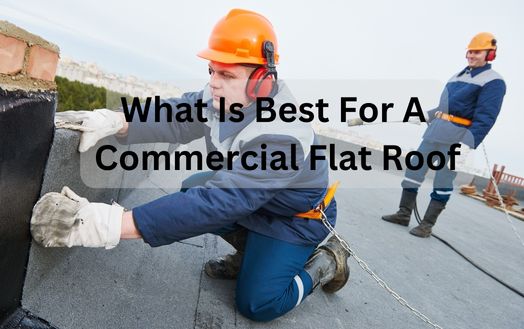
Commercial flat roofs play a crucial role in protecting businesses and their assets from the elements. Selecting the most suitable flat roof for your business is a decision that should not be taken lightly. With numerous options available, it can be overwhelming to determine which type of roof system is best suited for your commercial building. Factors such as energy efficiency, maintenance costs, and foot traffic need to be carefully considered when making this important choice. In this blog, we will explore the different types of commercial flat roofing systems, their features, and benefits, as well as what is best for a commercial flat roof. We will also discuss metal roofs as a viable option, the benefits of fluid-applied roof restoration, and how to establish an effective roof maintenance program. By the end of this blog, you will have a better understanding of the best options available for your commercial flat roof. Let’s dive in!
When it comes to selecting the most suitable flat roof for your business, there are several factors to consider. The type of roof system you choose can have a significant impact on energy efficiency, maintenance costs, and overall performance. Commercial flat roofs come in various materials, each with its own advantages and disadvantages. Understanding the different types of roofing materials and their suitability for your specific needs is crucial in making the right decision. Let’s explore some of these factors in more detail.
When choosing a commercial flat roof, several factors need to be taken into account. These factors include the type of roof system, roofing materials, energy efficiency, foot traffic, wind exposure, and long-term maintenance costs. Each of these factors plays a significant role in determining the suitability of a flat roof for your business.
The type of roof system you choose will depend on various factors, such as the climate of your area, the building’s purpose, and your budget. Flat roofing materials, such as ethylene propylene diene monomer (EPDM), thermoplastic polyolefin (TPO), and polyvinyl chloride (PVC), offer different advantages and disadvantages in terms of insulation, durability, and maintenance costs. Considering the energy efficiency of roofing materials is crucial in reducing long-term operating costs for commercial buildings.
Foot traffic is another important consideration, especially for buildings with rooftop access or those that require regular maintenance. The flat roof system should be able to withstand foot traffic without compromising its integrity. Wind exposure is also a vital factor, especially in areas prone to high wind speeds. Choosing a flat roof system that can withstand wind exposure will ensure the longevity and performance of the roof.
Selecting the right commercial flat roof is of utmost importance for several reasons. A properly chosen roof system can significantly impact energy efficiency, maintenance costs, and overall performance of commercial buildings.
Roof systems, such as EPDM, TPO, and PVC, offer different insulation properties, durability, and maintenance requirements. By choosing the right roof system, you can ensure excellent insulation, which leads to energy efficiency and reduced long-term operating costs for commercial buildings.
Maintaining and repairing a roof can be costly, especially if the wrong roof system was chosen initially. By selecting the appropriate flat roof system, building owners can minimize long-term maintenance costs and extend the lifespan of their roof.
Additionally, commercial buildings often require regular maintenance to prevent leaks, damage, and premature roof replacement. The selection of the right roof system can facilitate easy maintenance, ensuring that the roof remains in optimal condition and reducing the risk of extensive commercial roof repair NJ.
Furthermore, the type of roof system can affect the overall value of commercial buildings. A properly selected flat roof system can enhance the energy efficiency, insulation, and appearance of the building, resulting in increased property value.
In summary, selecting the right commercial flat roof is crucial for energy efficiency, maintenance costs, and overall performance of commercial buildings. It is essential to consider factors such as roofing materials, long-term maintenance costs, and the insulation properties of the roof system to make an informed decision.
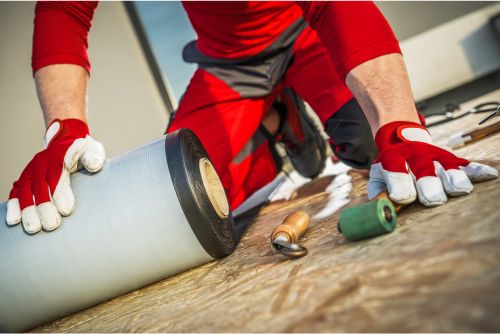
Now that we have discussed the importance of selecting the right commercial flat roof, let’s explore what is best for a commercial flat roof systems. Each type offers unique features, benefits, and considerations.
EPDM roofing systems, also known as ethylene propylene diene monomer roofs, are one of the most popular options for commercial flat roofs. These roofs are made of synthetic rubber, providing excellent insulation, durability, and low maintenance costs. Here are some key features and benefits of EPDM roofing systems:
TPO roofing systems, made of thermoplastic polyolefin, are another popular choice for commercial flat roofs. These roofs consist of single-ply membranes that are heat-welded together, ensuring excellent insulation, energy efficiency, and low maintenance costs. Here are some key features and benefits of TPO roofing systems:
PVC roofing systems, made of polyvinyl chloride, are known for their exceptional energy efficiency, low maintenance costs, and durability. These roofs consist of single-ply membranes that are heat-welded together, ensuring excellent insulation and performance. Here are some key features and benefits of PVC roofing systems:
Modified bitumen and built-up roofs (BUR) are traditional flat roof systems that have been used for decades. Modified bitumen roofs are made of layers of bitumen, reinforced with polyester or fiberglass, while BUR roofs consist of multiple layers of roofing felts and hot tar. Understanding the features and benefits of these systems is crucial in determining their suitability for commercial flat roofs.
Modified bitumen roofs offer excellent insulation, durability, and low maintenance costs, making them a popular choice for commercial flat roofs. Here are some features and benefits of modified bitumen roofs:
Built-up roofs, also known as BUR roofs, have been used for commercial flat roofs for many years. These roofs consist of multiple layers of roofing felts and hot tar, creating a durable and long-lasting roof system. Here are some advantages of built-up roofs:
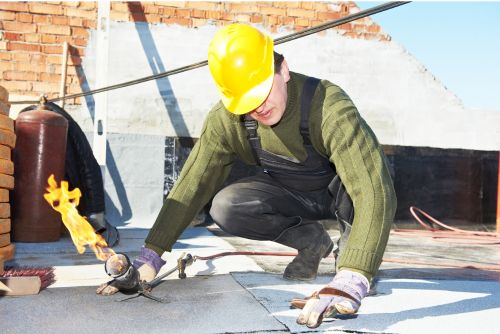
Insulation and vapor retarders play a crucial role in the performance of commercial flat roofs. Insulation materials provide thermal resistance, reducing heat transfer and energy consumption. Vapor retarders, on the other hand, protect flat roofs from moisture, preventing mold, deck deterioration, and damage to roofing materials. Understanding the importance of insulation and vapor retarders is essential in maintaining energy efficiency and extending the lifespan of flat roofs.
Insulation is an essential component of commercial flat roofs, offering numerous benefits for buildings and property owners. Here’s why insulation is crucial for flat roofs:
Vapor retarders play a vital role in commercial flat roofs, protecting buildings from moisture and its associated damages. Here’s the value of vapor retarders in commercial flat roofs:
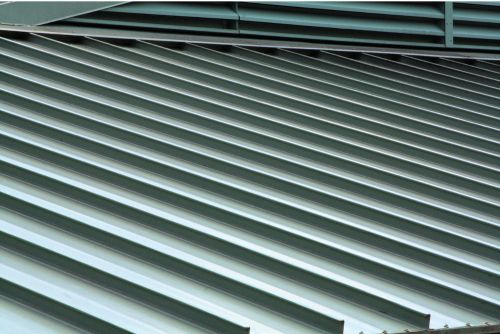
Metal roofs are increasingly gaining popularity as a viable option for commercial flat roofs. Their durability, energy efficiency, and aesthetic appeal make them an attractive choice. Let’s explore the pros and cons of metal roofs for commercial buildings, as well as when to consider them for flat rooftops.
Metal roofs offer several advantages for commercial buildings, but they also have some drawbacks. Here are the pros and cons of using metal roofs for commercial flat roofs:
Pros:
Metal roofs can be an excellent choice for flat rooftops, depending on specific circumstances. Here’s when you should consider metal roofs for commercial flat roofs:
Fluid-applied roof restoration is a modern roofing solution that has gained popularity in recent years due to its numerous benefits. This system involves the application of a liquid membrane directly onto the existing roof surface, creating a seamless, monolithic layer. Let’s explore this innovative roof restoration method in more detail.
Fluid-applied roof restoration is a process that involves the application of a liquid membrane, typically spray polyurethane foam, directly onto the existing roof surface. This system provides long-term protection, extending the lifespan of flat roofs and providing numerous benefits. Here’s more about fluid-applied roof restoration:
Fluid-applied roof restoration systems offer several benefits for flat roofs, making them an attractive option for property owners. Here are some of the key benefits of fluid-applied roof restoration:
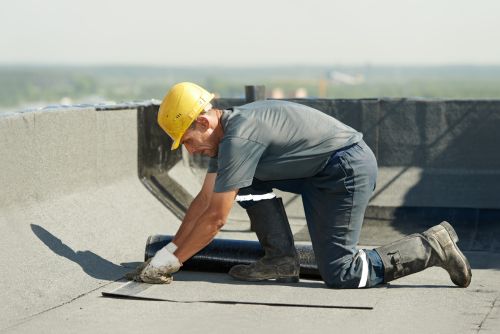
Establishing an effective roof maintenance program is essential to prolong the lifespan of commercial flat roofs and minimize long-term maintenance costs. Here are some steps to consider when establishing a roof maintenance program:
Choosing a commercial flat roof material that offers the longest lifespan is crucial for property owners looking for durability and long-term cost savings. Different flat roofing materials have varying lifespans, influenced by factors such as foot traffic, weather conditions, and maintenance practices. Here’s a glimpse of what is best for a commercial flat roof and their lifespan:
In conclusion, choosing the right commercial flat roof is crucial for the success and longevity of your business. Factors such as durability, cost-effectiveness, energy efficiency, and maintenance requirements should be considered when making your decision. EPDM, TPO, PVC, modified bitumen, BUR, metal roofs, and fluid-applied roof restoration are all viable options with their own advantages and disadvantages.
Furthermore, proper insulation and vapor retarders play a vital role in maintaining the integrity and longevity of your flat roof. Investing in a comprehensive roof maintenance program will also help extend the lifespan of your roof and prevent costly repairs down the line.
Ultimately, the best commercial flat roof material for your business will depend on your specific needs, budget, and long-term goals. Consulting with a commercial roofing company NJ can provide valuable insights and guidance in making the right choice for your commercial property.
Remember, your flat roof is an investment in the success and protection of your business, so choose wisely.